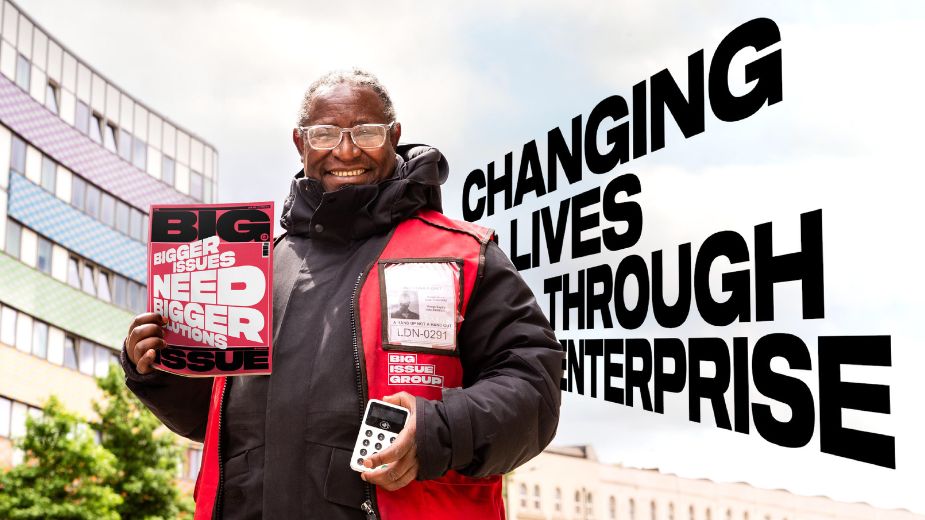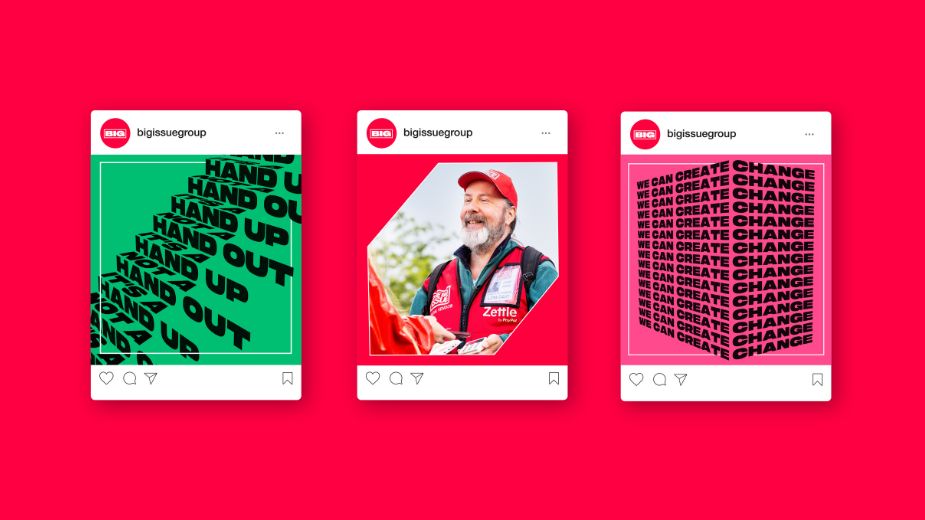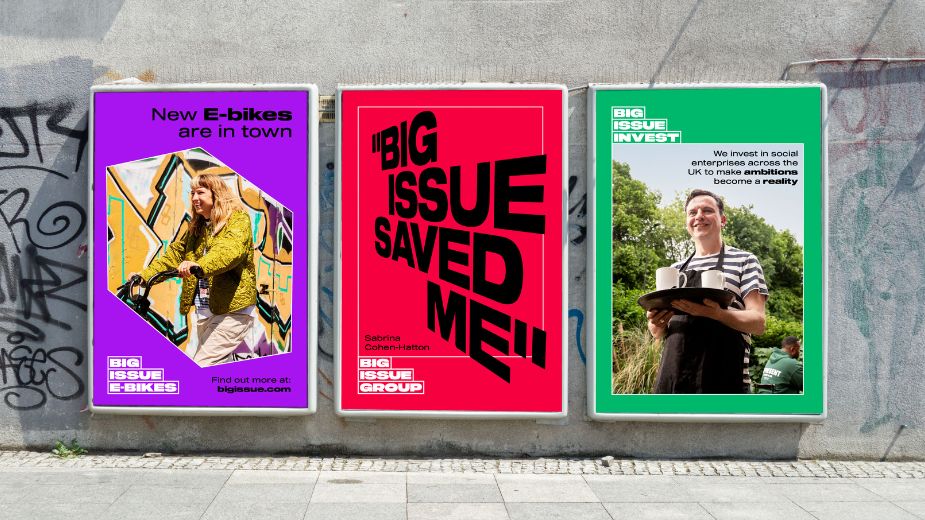
The Big Issue Launches Rebrand as Cost of Living Crisis Looms

With food and fuel costs rising, the UK is in the early stages of what looks set to be a protracted cost of living crisis. Covid-19 pushed many families into poverty and the problem is set to grow. Before the pandemic, the government estimated 14.5 million people were living in poverty and the Resolution Foundation says that by 2023 that figure will have surged to over 16 million.
Given such dire predictions, the work of The Big Issue is more relevant than ever. The pioneering social enterprise has been helping people find their way out of poverty and homelessness for 30 years. It started life as a magazine for homeless people to sell, creating the opportunity to earn money - and the distinctive red-vested vendors are now a distinctive and common sight on the streets of Britain’s towns. But over the past three decades its scope has grown broader, encompassing a number of schemes, initiatives and partnerships to help people. During the pandemic, the team found new ways to sell the magazine and distribute takings to vendors via retail, subscriptions and even giving vendors card machines. They also launched Big Issue Jobs to share employment opportunities and Big Issue Invest, a social enterprise support fund.

In order to reflect that evolution, and to gear up for the challenges that lie ahead, The Big Issue has just launched a dynamic new rebrand, alongside a refined mission and a five year strategy. According to Zoe Hayward, group chief marketing officer at The Big Issue, it sees the organisation take the front foot after two and a half years of reactive innovation and acceleration during the pandemic, which pushed more people into poverty and obstructed the traditional street-selling model.
The evolution starts from a new mission statement and value proposition of ‘changing lives through enterprise’, which builds on The Big Issue’s heritage but broadens its scope. “The evolved mission and five year strategy is to create innovative solutions for enterprise to unlock social economic opportunity for the millions of people trapped in poverty in the UK. And as part of that, we'll be launching a new value proposition which is changing lives through enterprise - and that's, I suppose, always been at the heart of what we do,” says Zoe. “What we intend to do is obviously harness our 30 years of experience in helping marginalised people in the UK to earn an income and extend this to a greater number of people in the UK.”
They worked with Kokoro to dive into and develop this new proposition and with Jones Knowles Ritchie to create the new visual identity and assets that better reflect the group’s range of activities. The Big Issue also works with a number of other agencies, such as FCB Inferno, which has been finding novel ways to connect vendors with the public - including bringing them to LinkedIn. Other agencies include 10up, december19, Rocketmill and Bold.
For the visual identity, the brief to JKR was to create a cohesive and progressive social identity that was dynamic and flexible enough to drive awareness and recognition of the social enterprise’s various pillars. It took the blocky rectangular ‘brick’ of the magazine’s distinctive masthead to create a visual identity that could convey the idea of stepladdering.
“We obviously tapped into the history of the brand, and the essence of the brand. The idea of dismantling poverty by creating opportunities became the cornerstone of JKR’s exploration. And then this manifested in terms of a design idea, and the design idea was around social scaffolding. So that was really around reflecting the support we provide people in communities to earn, learn and thrive,” explains Zoe,
“The new identity takes the boxy rectangles and animates them in 3D to transform them into steps and foundations. And that animation takes the brand from the printed page of the magazine into the world of digital and social. “What JKR did was they created a really dynamic and moving identity and transformed our most recognisable asset - in the brick - into a distinctive language of extrusion and 3D building blocks. So there's a really nice image that they've created which shows that transition between the old branding and the new branding.”
“It was very much designed to come to life in the digital space. The idea was that each sub-brand within the group would work within the group, in terms of the core colours and identity, but at the same time have its own unique colour and icon and kinetic behaviour.”

This rebrand also allows the group to educate the public about the various different activities it undertakes in order to help people. Zoe says there’s a lot of affection and respect for the brand but understanding tends to be limited to the magazine and vendors. By pushing more in the digital space, Zoe hopes to attract and nurture gen z and the next generation of The Big Issue supporters.
“Lots of people have got quite a personal connection with The big Issue and our story, so I think there’a alot of love for the brand within the UK. People want to support the vision for it to be successful and help as many people as possible, but I think it’s interesting for people to find out more about what we do,” says Zoe.

Looking to the future, the five year strategy is organised around three pillars: prevention, innovation and investment. Innovation marks a very 2022, post-Covid approach to crisis. Unlike the 2008 global financial crisis, this new squeeze comes after the organisation and the wider market has had two years’ worth of practice when it comes to accelerating tech implementation. In terms of investment, The Big Issue has invested in over 500 charities and social issues, resulting in a huge network of partner organisations. But ultimately, while fire fighting economic and social pressures facing people at the sharp end, the organisation wants to be proactive and help eradicate the conditions that drag people into poverty and homelessness.
“Prevention is a critical part of the work that we do in order that more people don't continue to fall into poverty,” says Zoe. “So I think it's about striking the right balance of tackling emergency issues, but at the same time preventing future generations from going through the same cycle of poverty.”
And as excited as Zoe is about the clarity and dynamism of the new mission, visuals and proposition, she and the team are focused on doing what they can to support people in the tough years ahead.
“We're excited about the change and the opportunity. But obviously, the fundamental purpose is to help as many people and support as many people as we can.”













